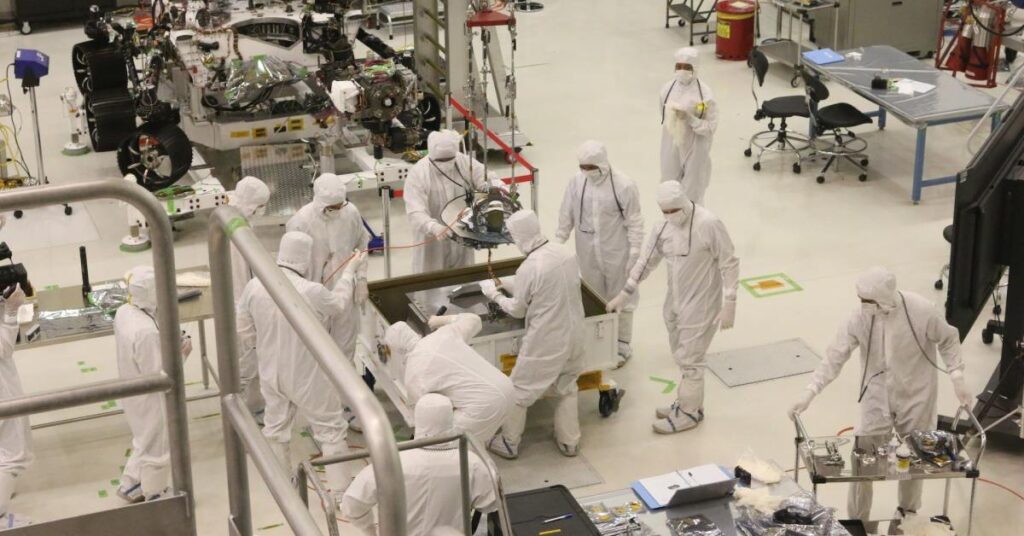
How to Choose an Online MBA
Online MBA programs make their degrees available to everyone everywhere, [...]

This website may earn a commission if you make a purchase after clicking on a product link in this article
Most MBA programs require students to do some pretty serious math; that’s why so many of them begin with a course in quantitative methods and analysis. For many core MBA courses — financial accounting, corporate accounting, economics, statistics, operations, finance — mathematics is an essential skill.
You would think, then, that the GMAT — the exam whose sole purpose is to predict whether you’ll succeed in an MBA program — would include lots of challenging, high-level math. After all, your success as a business graduate student will depend in part on your ability to perform and understand complex calculations. Wouldn’t you think the entrance exam would test you on that?
You probably would… but it doesn’t. While the reasoning behind the solution to GMAT questions may be a little tricky, the math required to solve them is all stuff you should have learned before you entered high school. In fact, the math isn’t tricky at all; you could do it when you were a kid, and if you’ve forgotten it through lack of use, you’ll be able to do it again pretty quickly with some refreshers and a little practice.
Here’s a list of the math skills you need to answer all (that’s right, all) the math questions on the GMAT:
As you formulate your GMAT exam study plan, focus on these skills, and for goodness sake, don’t bother with regression models, stochastic calculus, or the time value of money.
So, then, the question remains: why do the test writers confine the math skills tested on the GMAT to those any fourteen-year-old should know? The reason can be found in the official name of the GMAT’s math section. It’s not called the Mathematics section or even the Quantitative section; it’s called the Quantitative Reasoning section.
In the end, the test writers aren’t really interested in your math skills. Rather, they want to see how you apply math skills that everyone should have in order to reason through some challenging — and sometimes intentionally misleading or confusing — questions.
How does the GMAT test quantitative reasoning? To see, let’s look at a sample problem-solving item and walk through how to answer the question.
SAMPLE QUESTION:
Amanda bicycles from Town A to Town B at a rate of 10 miles per hour. Later, she makes the return trip from Town B to Town A at a rate of 15 miles per hour. What is Amanda’s average speed for the round trip?
A) 10.5 miles per hour
B) 12 miles per hour
C) 12.5 miles per hour
D) 14 miles per hour
E) It cannot be determined from the information given.
The mathematical principle involved in solving this problem — i.e. the formula rate × time = distance — is a simple one that you probably learned in sixth or seventh grade. What’s tricky about this question is that it sets two reasoning traps. Identify them and apply some common sense and you may be able to avoid putting pencil to paper entirely; the solution will be evident before you’ve done a single calculation.
The first trap is answer choice E. There is an undeniable logic to this answer (“it cannot be determined from the information given”): if you only have one of three variables in an equation (i.e. you have rate, but not time or distance), how can you solve the equation? As it turns out, distance is irrelevant because both legs of the trip are equidistant; therefore, whether Town A and Town B are three miles apart or a thousand miles apart, the answer will be the same. We’ll demonstrate this is just a minute, so if that sounds wrong to you, just hang on. We’ll get there.
The second trap is answer choice C, 12.5 miles per hour. Again, there’s an undeniable logic to this answer: Amanda rode equal distances at rates of 10 and 15 miles per hour, so shouldn’t her average speed be the average (arithmetic mean) of the two: (10 + 15) ÷ 2, which equals 12.5? Unfortunately, no.
Here’s why: because 10 miles per hour is slower than 15 miles per hour, Amanda will spend more time riding from Town A to Town B than she spends on the return trip, and her average speed — calculated as rate = distance ÷ time — will reflect that. Her average speed will be closer to 10 miles per hour than 15 miles per hour because she spends more time traveling 10 miles per hour. If this sounds totally wrong to you, hang on; we’ll prove it very soon. For now, just trust us.
At this point, you should know that the answer must be A or B because the correct answer has to be less than 12.5 miles per hour. You could guess at this point. Hopefully, you would guess B, the correct answer, reasoning that Amanda’s rate will be slower than 12.5 miles per hour but not a whole lot slower than that, making 12 the more reasonable guess of the two remaining choices.
Or, you could calculate the answer. As we said before, it doesn’t matter how far apart the two towns are; here’s where we prove it.
Let’s try another number to prove that distance doesn’t matter. This time we’ll say that the towns are 90 miles apart. Now it takes Amanda 90 ÷ 10, or 9, hours to travel from Town A to Town B, and 90 ÷ 15, or 6, hours to travel from Town B to Town A. That’s a 180-mile round trip completed in 15 hours. 180 ÷ 15 equals — you guessed it — 12. Regardless of how far apart the towns are, Amanda’s average speed will always be 12 miles per hour.
Again, the math isn’t particularly challenging; the tricky part is the reasoning. Remember, you’ll be taking the GMAT under timed conditions, with the knowledge that the results will have a huge impact on your future. That’s a lot of pressure, and the designers of the exam know it. The wrong answers are the ones that look good to someone who is under a lot of pressure.
The best way to combat the exam’s design is to read our tips and to practice a lot until you’ve seen and know all the tricks and traps of the GMAT. The Official Guide to the GMAT is the best source for practice questions and even for entire GMAT practice tests. If you’re serious about prepping for the exam, you should get a copy and work in it a little every night for at least four to six weeks before taking the exam. As dozens of successful and expensive test prep courses will attest, this is one exam you can prepare for. Others will, so you should too.
Questions or feedback? Email editor@noodle.com

Online MBA programs make their degrees available to everyone everywhere, [...]

In 2004, Burton D. Morgan Foundation and other Cleveland organizations [...]

International marketers have to consider local language(s), local norms and [...]

Organizations must design facility layouts and workstations in a way [...]

Many aspiring entrepreneurs understand the basic idea that the firm [...]
Categorized as: Business Administration, Business & Management